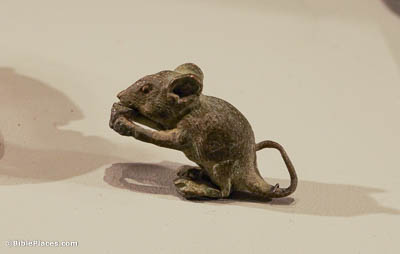And the Philistines called for the priests (6:2).
It is commonly thought that the Philistines originated in the west, with roots in the islands of the Aegean. This fresco depicts a Minoan priest from the palace complex at Knossos on the island of Crete. Although it is several centuries earlier than the time of 1 Samuel 6, it may represent an ancestral group of the Philistines and perhaps earlier religious practices of the Philistines. Other scholars have suggested that the Minoan civilization was distinct and may have been brought to an end by the Sea Peoples. This fresco was photographed at the Ashmolean Museum at the University of Oxford.





